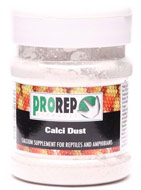All About Crested Geckos
Summary
Crested geckos are one of the most popular lizard pets. And this is all for a reason – crested geckos make amazing pets. Crested geckos are good pet lizards for both beginners and advanced keepers. They have a lot to offer – their amazing personalities and looks will not fail to amaze you! Crested geckos are naturally found on the islands of New Caledonia, located near Australia and Fiji. Crested geckos are arboreal, meaning that they like climbing trees and shrubs in their natural environment. Crested geckos have sticky pads on their toes which allows them to climb smooth surfaces, including glass. Crested geckos are nocturnal and spend their time during the day in cover, being mostly inactive and hiding.
Adult size:
- • A fully-grown crested gecko can be 8 inches (20 cm) to 10 inches (25 cm) long.
Life span:
- • Under proper care, a crested gecko should live to 15 to 20 years, so they are certainly a long-term commitment.

Considerations Before Purchasing
- • Who will look after your new pet if you are away?
- • Can you provide fresh food for your pet?
- • Are you prepared to take on an animal that could live for 10 years?
- • Is the rest of the family happy to live with a lizard that eats live insects?
- • Can you afford all the equipment necessary to keep your pet happy?
- • Have you done your research on Crested Geckos and their relevant care?
Enclosure
Crested geckos require higher humidity and lower temperatures than most commonly kept reptile species, so a glass terrarium is a great choice for them. Because crested geckos are arboreal they will need more height than depth, and a 45 x 45 x 60cm (18 x 18 x 24”) is the minimum size for a single crested gecko. Bigger is better though and we would advise going for the bigger enclosure, such as the 60 x 45 x 60cm (24 x 18 x 24”). While shedding, they can become less “sticky” from going into shed, so it’s a good practice to provide a crested gecko with a Reptihammock. As these geckos are nocturnal, it is important to provide cover for hiding behind during the day. Plastic and silk plants are great for this. Crested geckos are also masters of their arboreal domain, and will very much appreciate a variety of climbing structures within their tank. Do not over clutter the tank. Leave plenty of open space.
Heating
Crested geckos require a day time temperature range of 22°C in the cool end to a maximum of 27°C in the warm end (72°F to 80°F) with the optimum being 24°C to 26°C (75°F to 78°F). It is important to note that if the temperature exceeds 28°C crested geckos do not fare well and prolonged temperatures above 30°C will prove fatal. These temperatures can be achieved by using a heat mat mounted on the outside of a wall, controlled by a thermostat and monitored with an accurate thermometer

Humidity
Crested geckos do require moderate humidity. This can be accomplished by misting the cage once or twice a day. Ideally, the humidity level should not drop below 50%. Crested geckos should get several hours of higher humidity (80-100%) every day to ensure that they shed properly. Misting heavily once or twice a day will achieve the required higher humidity levels. To monitor humidity levels customers should be encouraged to purchase an inexpensive hygrometer (relative humidity gauge) for use within the enclosure.
Substrate
The substrate used with crested geckos should be one that not only promotes humidity but is easy to spot clean as well. Orchid bark, cypress mulch, coco bedding, or a combination are all excellent choices. Patches of sphagnum moss not only adds interest and beauty to the enclosure but will further aid in humidity management.
Lighting
Although Crested Geckos are nocturnal and do not require much direct exposure to sunlight, there is growing evidence that exposure to low levels of UV light is beneficial to their overall health and encourages natural behaviours. A 5% UV light should be used to help the gecko use the calcium from its diet.
Feeding & Water
Pets Corner’s opinion is that crested geckos thrive when they are fed a complete powdered diet, such as Repashy that is supplemented with insects. Repashy is mixed with two parts water and offered in shallow dishes three times a week as much as these geckos will eat at a feeding. The diet is allowed to remain 24 to 36 hours before removal. With regards to insects, locusts are the best choice and you should select a size where the length of locust equals the width of the head. locusts should be lightly coated with Calcidust every meal. Also on alternate days, the insects must be lightly dusted with a vitamin D3 supplement such as Nutrobal. A shallow dish of water should be placed in the bottom of your crested gecko’s terrarium. Keep it constantly full.

Handling
Crested Geckos can tolerate handling but they can be nervous and jumpy so please be patient. If they are terrified, then they can drop their tails which will not grow back. Children should always be supervised with any animals and as they are expert climbers, care should be taken to avoid your Crested Gecko escaping whilst handling. Be aware that they can become too cold if kept out of the enclosure for a long time in cold weather. Do not handle your Crested Gecko for at least 24 hours when you first take them home to allow them to settle into the new surroundings. It is important for hygiene reasons to wash your hands with an anti-bacterial hand wash before and after handling your Crested Gecko.

